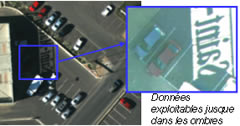11 juillet 2013 Laurent Fabius - Conférence parlementaire – Assemblée nationale
Mesdames et Messieurs les Parlementaires,
Mesdames et Messieurs,
La défense concerne le cœur de la souveraineté des Etats. C’est pourquoi il est apparu nécessaire depuis longtemps d’ancrer la construction européenne dans une approche commune, voire un partage de notre défense. C’est aussi la raison pour laquelle cet objectif est particulièrement difficile à mettre en œuvre – je n’ai pas besoin d’évoquer longuement la CED.
Plus d’un demi-siècle après, les paramètres ont beaucoup changé. L’Europe de la défense apparaît comme une nécessité pour la défense de l’Europe. C’est ainsi que nous abordons le sujet : non pas de manière théorique ou théologique, mais de manière pragmatique. L’Europe de la défense est une réponse nécessaire à des défis qui s’imposent à nous.
* *
Les défis, ce sont d’abord les menaces ou, plus modestement, les risques qui peuvent exister pour la sécurité de l’Europe et de la France. J’en évoquerai quelques uns.
La politique de puissance et de souveraineté de la Russie peut aboutir à des tensions. L’affirmation économique de la Chine et l’augmentation de son budget de défense, comme celle d’autres pays asiatiques, conjuguées à de nombreux conflits territoriaux s’accompagne d’un surcroit d’instabilité en Asie. Le développement des crises et des risques dans le voisinage immédiat de l ’Europe est susceptible d’affecter notre sécurité. A l’est demeurent des fragilités dans des Etats issus de l’ex-URSS et de l’ex-Yougoslavie. Dans notre voisinage méditerranéen, de nombreux pays traversent une transition démocratique au prix d’une grande instabilité, de tragédies et d’incertitudes, comme la Syrie, l’Egypte, la Libye et d’autres. En Afrique, en dépit du potentiel de croissance, on trouve toute la palette des risques pour la sécurité résultant de l’absence d’Etat dans certains pays, des inégalités, des trafics, de la corruption… S’ajoutent des menaces plus diffuses, mais non moins redoutables : prolifération, cyberguerre, terrorisme… Face à ces risques, l’évolution des priorités stratégiques américaines avec un certain désengagement du champ européen au profit de l’Asie laisse l’Europe, pour la première fois depuis la fin de la seconde guerre mondiale, davantage seule face à ses responsabilités.
Or, dans le même temps, les pays européens doivent faire face à des contraintes budgétaires qui ne sont pas compatibles avec une augmentation de nos budgets de défense. Nos pays sont confrontés à des limitations de développements capacitaires, certains à des coupes significatives.
Vous connaissez l’équation – persistance ou augmentation des menaces contre limitation ou diminution des moyens. Face à elle, l’Europe de la défense constitue une réponse évidente. Nous sommes dans l’obligation de mutualiser, de partager, de trouver des points de cohérence si nous voulons conserver notre crédibilité, éviter un déclassement stratégique et rester capables d’assurer la sécurité de notre continent et de nos ressortissants.
Les opinions publiques ont d’ailleurs compris cette situation. Il faut le noter, parce que ce n’est pas le cas dans tous les domaines de la coopération européenne. Nos concitoyens sont demandeurs d’Europe de la défense, perçue comme un facteur d’efficacité et d’économies.
* *
Pour avancer, nous pouvons nous appuyer sur certains acquis significatifs et peu connus.
Avec le temps, les Européens ont développé une conception mieux partagée des intérêts de sécurité. Même si des différences demeurent, les perceptions des enjeux de sécurité se rapprochent. La stratégie européenne de sécurité adoptée en 2003 y a contribué.
L’Union a commencé à avancer autour d’une politique étrangère et de sécurité commune dont nous voyons aujourd’hui certains résultats en termes de solidarité et de force d’entrainement, notamment en matière d’action civile sur certains grands enjeux de sécurité - positions communes, régimes de sanctions, aide économique et financière. En termes de gestion de crise et de prévention des conflits, l’Europe s’est dotée d’outils qu’il était difficile d’imaginer quand les bases du projet de défense commune ont été posées à Saint-Malo en 1998. En une décennie, l’Union a réussi à mettre en place des structures politico-militaires, un mécanisme de financement des opérations militaires et une force de réaction rapide avec des Groupements tactiques et un centre opérationnel, embryon de quartier-général européen. Sur cette base, l’Union a lancé 27 opérations civiles et militaires sur 3 continents : 11 sont achevées, 14 sont actuellement en cours (3 en Europe - Balkans et Caucase -, 4 en Asie, au Moyen Orient et en Asie centrale, 7 en Afrique) et 2 sont en cours de planification.
Infographie : les opérations civiles et militaires de l'Union européenne
Le traité de Lisbonne peut permettre des avancées, en renforçant la cohérence de l’action extérieure autour du SEAE au profit de l’affirmation d’un rôle mondial de l’UE, en élargissant le champ des missions de l’Union, en améliorant la solidarité entre les Etats européens pour assurer leur défense et leur sécurité.
* *
Mais il y a encore énormément à faire et des divergences demeurent. Les outils et les structures de gestion de crise existent mais leur mise en œuvre et leur mobilisation sont lentes et la réactivité des Européens dans la réponse à une crise est encore insatisfaisante.
Les Européens souffrent souvent d’une absence d’évaluation commune des problèmes ou des situations sur le terrain et d’une insuffisante définition des priorités qui devraient les unir dans l’action.
Aujourd’hui, en grande partie en raison des lacunes européennes en termes de capacité – en matière de transport stratégique, de ravitaillement aérien, d’observations aérienne et spatiale, on l’a vu au Mali -, le moteur opérationnel de la politique de sécurité et de défense commune n’est pas suffisant. L’Europe se cantonne trop souvent à des missions civiles de formation au détriment d’opérations militaires de stabilisation. Pour donner corps et crédibilité à l’action extérieure européenne, celle-ci doit pouvoir s’appuyer sur tous les moyens d’action couvrant les différents aspects d’une crise.
La coopération en matière d’armement est faible et les sources de malentendus et d’incompréhensions existent. Or, l’Europe de la défense ne saurait se limiter à une ossature purement institutionnelle et procédurale ; sa substance doit être ce que l’industrie de défense sait produire. Il est illusoire de penser que nous pourrons relever les défis industriels individuellement : les contraintes budgétaires et le renforcement de la concurrence internationale, notamment en Asie, nous imposent des partenariats, des regroupements et des partages de taches.
* *
Pour relever tous ces défis, le Conseil européen de décembre prochain est un moment majeur. Le Conseil européen ne s’est plus exprimé sur les enjeux de sécurité et sur le rôle de l’Union dans le monde depuis 2008, alors même que ces sujets sont au cœur de son mandat. Il faut donc une nouvelle impulsion et nous voulons pour cela utiliser pleinement ce rendez-vous.
Ce ne sera pas aisé : des différences demeurent entre Européens sur l’appréciation de l’intérêt d’une Europe de la défense. Malgré les déclarations d’intention, la volonté concrète de coopérer et de coordonner les programmes est restée assez limitée ces dernières années.
Pour avancer, la meilleure approche me semble une démarche pragmatique, fondée sur un constat et une méthode :
- Le constat, c’est celui de la situation existante, que nous devons, avec nos partenaires, établir de manière objective. Si nous n’y prenons garde, l’Europe, placée face à ses responsabilités, risque de se trouver dans l’incapacité d’assurer sa propre sécurité et de peser face aux défis stratégiques du monde. Le Conseil européen peut et doit faire cette analyse, de manière transparente et lucide. Si l’on en tire les conséquences, une véritable relance de l’Europe de la défense apparaîtra nécessaire.
- La méthode, c’est celle des avancées concrètes, en partant de l’amélioration des outils et des structures en place. Evitons les débats trop institutionnels ou de doctrine qui ne débouchent au mieux qu’à très long terme et appuyons nous sur les possibilités de coopération que nous offrent les traités, et notamment Lisbonne, sans nous interdire d’avancer à quelques-uns, une fois les objectifs clairement définis. A ce stade, nous souhaitons porter un débat à 28, définir des axes pour l’Union européenne. En fonction de la mise en œuvre – après l’installation des nouvelles institutions post-2014 -, nous examinerons tous les moyens d’avancer efficacement.
Ce Conseil européen devrait donc être l’occasion de donner une impulsion à une industrie de défense européenne compétitive, facteur de croissance et d’autonomie stratégique. Si les Européens ne coopèrent pas, ce sont des pans entiers de capacités industrielles, de savoir faire, et donc d’emplois qui risquent de disparaitre. Les industriels attendent de signaux des autorités publiques : par exemple, le moment est sans doute venu de promouvoir une coopération industrielle en matière de drones, dont la visibilité pour les opinions publiques serait marquante.
La mutualisation et la coopération sont également les voies réalistes en matière de développement capacitaire. Les Européens doivent relancer quelques grands programmes structurants en s’appuyant davantage sur l’Agence européenne de défense, outil utile mais encore sous-employé et insuffisamment doté. A cet égard, il est essentiel de tirer les enseignements des opérations récentes en Libye et au Mali, qui ont montré des atouts mais aussi mis en évidence des lacunes, par exemple en matière de transport stratégique et tactique ou de l’observation aérienne et spatiale.
Les actions de long terme ne peuvent être menées à bien si l’on ne peut pas assurer en même temps la sécurité des personnes et des biens. La aussi, l’exemple du Mali doit nous inspirer. L’approche globale de l’Union, la plus-value de son action sur la scène internationale, doit pouvoir se matérialiser en articulant mieux les actions de développement et le volet de sécurité. Le Conseil européen pourrait insister sur la nécessité de réduire la distance entre développement et sécurité, par exemple en prévoyant dans les programmes d’aide au développement des actions qui concourent au renforcement de la sécurité.
En parallèle de ces coopérations et avancées concrètes, il nous faut progresser dans l’approche commune des priorités. Les rapprochements dans la perception de notre voisinage sont encourageants. Mais il faut aller au-delà. Plus qu’une actualisation des menaces, les Européens ont besoin d’une définition des priorités de l’Union en matière de défense. Il nous faut une approche plus stratégique du traitement des menaces et des enjeux de sécurité. Evidemment, les intérêts spécifiques des Nations demeurent. Mais, au fil des crises, une conscience commune apparaît. D’un point de vue thématique (cyber sécurité, sécurité maritime, surveillance des frontières, stabilisation post-conflit notamment) ou géographique (Balkans, Méditerranée, Sahel, Proche-Orient), les priorités communes apparaissent. C’est sur ces constats qu’il nous faut construire, y compris par de nouvelles opérations et de nouvelles actions communes.
Ces orientations ne sont évidemment pas exhaustives. Mon ami Jean-Yves Le Drian y reviendra et les complètera en conclusion de cette conférence. Elles constituent la base de ce que la France pourrait proposer à ses partenaires afin de réussir le rendez-vous de décembre. Pour être efficace, je le répète, nous devons nous concentrer sur quelques domaines clefs plutôt que nous disperser.
La France a depuis longtemps considéré la coopération européenne en matière de défense et de sécurité comme une ambition majeure. Aujourd’hui, il y a urgence. Le gouvernement compte sur vous pour l’appuyer et l’aider. Vous pouvez compter sur nous pour agir de manière déterminée sur ce dossier décisif. Merci.





















![British airborne engineers deploying a 100-foot Medium Girder Bridge [Picture: Corporal Obi Igbo, Crown copyright]](http://img.over-blog-kiwi.com/0/54/74/56/201307/ob_1432f9_british-airborne-engineers-deploying-a-100-foot-m.JPG)
![Lieutenant Colonel Jason Hones, Commanding Officer of 23 Engineer Regiment (Air Assault), watches the construction of a 100-foot Medium Girder Bridge [Picture: Corporal Obi Igbo, Crown copyright]](http://img.over-blog-kiwi.com/0/54/74/56/201307/ob_8a3119_100-foot-medium-girder-bridge.JPG)
![British and French Airborne Engineers train in bridge site reconnaissance [Picture: Corporal Obi Igbo, Crown copyright]](http://img.over-blog-kiwi.com/0/54/74/56/201307/ob_5f045a_british-and-french-airborne-engineers-train-in-br.JPG)
![British Army sappers prepare to set up an Air Portable Ferry Bridge [Picture: Corporal Obi Igbo, Crown copyright]](http://img.over-blog-kiwi.com/0/54/74/56/201307/ob_13f929_air-portable-ferry-bridge.JPG)
![Airborne Sappers launch an Air Portable Ferry Bridge [Picture: Corporal Obi Igbo, Crown copyright]](http://img.over-blog-kiwi.com/0/54/74/56/201307/ob_729d51_air-portable-ferry-bridge.JPG)












![Royal Navy Wildcat helicopter (library image) [Picture: Copyright AgustaWestland]](http://img.over-blog-kiwi.com/0/54/74/56/201307/ob_c94f17_royal-navy-wildcat-helicopter-picture-agustawestl.jpg)


